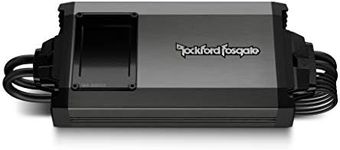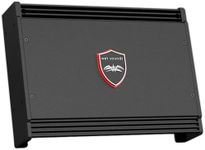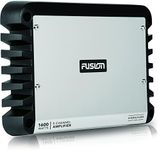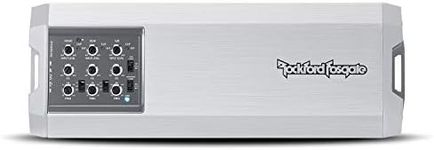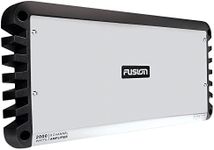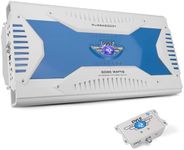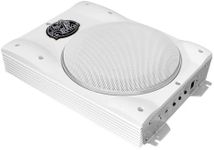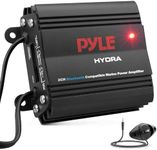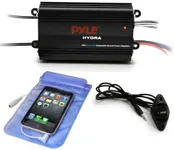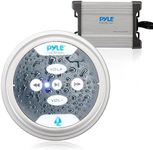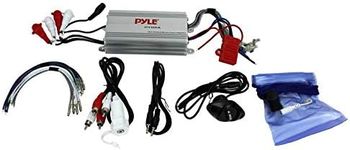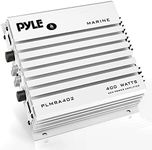Buying Guide for the Best Marine Amplifiers
Choosing the right marine amplifier is crucial for enhancing your boating experience with high-quality sound. Marine amplifiers are designed to withstand the harsh marine environment, including exposure to water, salt, and humidity. When selecting a marine amplifier, it's important to consider several key specifications to ensure you get the best performance and durability for your needs.Power OutputPower output, measured in watts, indicates how much power the amplifier can deliver to your speakers. This is important because it affects the volume and clarity of the sound. Amplifiers with higher power output can drive larger speakers and produce louder sound without distortion. For casual listening, an amplifier with lower power output (50-100 watts per channel) may suffice. For louder, high-quality sound, especially in larger boats, consider an amplifier with higher power output (100-300 watts per channel). Choose based on the size of your boat and your desired sound level.
Number of ChannelsThe number of channels in an amplifier determines how many speakers it can power. A 2-channel amplifier can power two speakers, while a 4-channel amplifier can power four speakers, and so on. This is important for creating a balanced sound system on your boat. If you have a small boat with just a couple of speakers, a 2-channel amplifier may be sufficient. For larger boats with multiple speakers, a 4-channel or even a 6-channel amplifier might be necessary. Consider the number of speakers you plan to install and choose an amplifier with enough channels to support them.
Marine CertificationMarine certification ensures that the amplifier is designed to withstand the marine environment, including exposure to water, salt, and humidity. This is crucial for the longevity and reliability of the amplifier. Look for amplifiers that are specifically labeled as 'marine' or 'marine-certified.' These amplifiers typically have coated circuit boards and corrosion-resistant materials. Always choose a marine-certified amplifier to ensure it can handle the conditions on your boat.
Signal-to-Noise Ratio (SNR)The signal-to-noise ratio (SNR) measures the clarity of the sound produced by the amplifier. It is expressed in decibels (dB) and indicates how much background noise is present compared to the audio signal. A higher SNR means clearer sound with less background noise. For high-quality sound, look for an amplifier with an SNR of 90 dB or higher. If you are less concerned with audio fidelity, an SNR of 80 dB or above may be acceptable. Choose based on your preference for sound clarity.
Size and InstallationThe physical size of the amplifier and its installation requirements are important considerations, especially in a boat where space may be limited. This spec is important because it affects where and how you can install the amplifier. Measure the available space on your boat and compare it to the dimensions of the amplifier. Some amplifiers are compact and can fit in tight spaces, while others are larger and may require more room. Choose an amplifier that fits comfortably in your available space and consider the ease of installation.
Cooling SystemThe cooling system of an amplifier helps prevent overheating, which can affect performance and longevity. This is important because marine environments can be hot, and amplifiers generate heat during operation. Some amplifiers use passive cooling with heat sinks, while others have active cooling with fans. For casual use in cooler climates, passive cooling may be sufficient. For heavy use or in hot climates, an amplifier with an active cooling system may be necessary to ensure reliable performance. Choose based on your usage and the typical temperature conditions.
